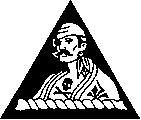|
This was a daylight tactical support mission involving 16 planes from the
6th Bomb Group:
During April, eight such tactical missions were flown with an average
attacking force of twelve B-29's. Kanoya East Airfield was hit four
times - on the 8, 17, 21 and 22 of April. * * *
On the night of the 22nd the plane manned by Lt Dean J. Mutch and crew
of the 24th Squadron, had an engine catch on fire on takeoff. Lt
Mutch circled the island and when an attempted landing at West Field
resulted in a crash, several members were knocked unconscious. After
escaping from the burning plane, Lt Mutch reentered the ship through a
hole in the nose and with the aid of the engineer, Lt W. E. Reed,
succeeded in removing the unconsious bombardier, Lt C. A. Juskiewicz.
A second entry into the plane was made to rescue the co-pilot, Major Alton
P. Donnell, also unconscious. Lt Mutch entered the burning ship a
third time and searched for other crew members he thought were still
trapped. Lt (now Capt) Mutch was awarded the Soldier's Medal in July
for his heroism in saving the lives of the two crew members.
[Pirate's Log, p. 38]
According to the DFC Citation for Crew #3916:
For extraordinary achievement while participating in
aerial flight 22 April 1945. These individuals were combat crew members of
a B-29 on a high precision-bombing raid against a Japanese airfield on the
island of Kyushu, Japan. The purpose of the raid was to destroy facilities
on the field, preventing the enemy from staging further heavy, damaging
attacks against our Naval forces then busy in the invasion of nearby
Okinawa. The achievement of this objective depended upon extraordinary
precise flying and bombing. On this mission, this crew flew their plane as
briefed and dropped their bombs exactly on the target in spite of heavy,
intense and accurate anti-aircraft fire which damaged their plane and
extremely aggressive fighter attacks which sent a twenty millimeter shell
into the fuselage, shot away the rudder cable and resulted in other
damage. On the return to base, the crew flew their plane within sight of
another even more seriously damaged B-29 so that in the event of a forced
ditching they would be able to assist the rescue facilities. Throughout
the entire mission each member of this crew performed his assigned duties
with exceptional skill and contributed materially to its outstanding
success which destroyed hangers and maintenance facilities on the airfield
as well as damaging planes and equipment. By their coolness and courage in
the face of desperate enemy opposition, their determination to accomplish
the assigned mission and the superior teamwork of these individuals, who
have completed more than twenty-one combat sorties, reflected great credit
on themselves and the Army Air Forces.
Captain JOHN C JAEKELS (then First Lieutenant) as
Airplane Commander
First Lieutenant ARTHUR C LOGIN as Navigator
First Lieutenant JOHN N THOMAS as Bombardier
Second Lieutenant MALCOLM MCFEE as Pilot
Master Sergeant EDWARD E MCNABNEY as Flight Engineer
Technical Sergeant RAYMOND J JAHELKA as Central Fire controller
Staff Sergeant BEN M SPANN as Radar Operator
Staff Sergeant DONALD F WALTON as Radio Operator
Staff Sergeant ALBERT J HRACH as Right Blister Gunner
Staff Sergeant WILLIAM A SAVIDGE as Left Blister Gunner
Staff Sergeant BERNARD E SNYDER as Tail Gunner
[Transcribed by David Wilson, son of Sgt Bernard E. Wilson (Gunner, "Anonymous IV")]
According to the DFC Citation for Captain CLAYTON L.
ANDERSON, Aircraft Commander (40BS):
Captain CLAYTON L. ANDERSON, 40th Bombardment Squadron,
6th Bombardment Group, Air Corps, United States Army. For
extraordinary achievement while participating in aerial flight as Airplane
Commander of a lead B-29 aircraft on two highly successful bombing
missions against airfields on Kyushu, Japan, 22 April 1945 and 28 April
1945. Successful accomplishment of these missions was made under adverse
weather conditions, in the face of difficult navigational problems, in
view of the ever present danger of ditching while crossing thousands of
miles of ocean from the base in the Marianas Islands. The flights were
subjected to enemy anti-aircraft fire and fighter opposition. In spite of
these obstacles, he so skillfully led the raid that ninety-seven percent
of the bombs on both missions fell within 1000 feet of the designated
point of impact. The excellence of his work occurred at a time when every
bomb against these airfields helped destroy enemy aircraft which were
seriously interfering with the allied campaign on nearby Okinawa. His
actions reflect great credit on himself and the Army Air Forces.
[Transcribed by David Wilson, son of Sgt Bernard E. Wilson (Gunner, "Anonymous IV")]
|

